At the end of PART 1 of this article, we had our chip/s soaking in Acetone prior to removal of the resin casing and/or resoldering of the chip components. The chip I had repaired previously was left soaking for two days. Due to unforseen circumstances, this time I had to travel interstate for a few days and the chip was soaking while I was gone. When I got back, the chip had been soaking for around five days and the resin had almost completely separated itself from the ceramic base BEFORE I had even removed it from the Acetone as you can see here (photo taken just after removing chip from Acetone):
This made the removal of the resin MUCH easier than last time and had no adverse affects on any of the components. Therefore, I highly recommend leaving your chip/s soaking until you can see the resin splitting away from the ceramic base (typically between two to five days).
Once you have removed the chip/s from the Acetone, you should be able to simply remove the resin by pulling it away with your fingers. You should end up with a result similar to this:
For the next step, you’ll need a pair of tweezers and a 21 gauge needle (which you can get from a pharmacy). You could alternatively use a pin in place of the needle but the needle makes things easier because it has a tapered point which we use in the next step as a scoop:
We will now remove the remaining resin from the edges of the ICs and between the chip pins and the IC legs. Place the tip of your 21G needle (or pin if you prefer) under the residual resin between the IC legs and gently push it into the resin and lift. Don’t lever the needle against the ceramic PCB. Doing so could damage the tracks. Just lift upwards:
You probably won’t dislodge the resin but you should lift it enough to be able to grab it with your tweezers and pull it away from the chip:
Any remaining resin can be gently dislodged with the needle. Repeat for all the pins on the ICs, the main pins connecting the chip to the Module Board and anywhere else there is resin and you should end up with something like this (note here how bad the solder joints have become over time trapped in heat under the resin casing!!):
Next up, we’ll solder new pins to the chip. For this, I used sections of SIL (Single In Line) IC socket strip which should be readily available from most electronic components stores. In Australia, I purchased this from Jaycar Electronics. The strip I purchased comes in 32 pin lengths and is simply cut to length (12 pins wide) with a pair of side cutters. Pin 11 is also cut off with the side cutters to match the Module Board and the chip. Cut two strips in like manner. We’ll be soldering the second strip into the Module Board to make any future repairs MUCH easier.
If you have a small bench vice, use it to hold the IC strip and solder the chip onto it. I used a pair of wire strippers here for the task of holding the IC strip. If you have a pair like these, beware that the section doing the clamping is often plastic and it will melt if you solder the pins being held! I soldered one end (the end NOT being gripped!) and then turned the wire strippers around, reclamped the other side of the pins and soldered the remaining ones. Make sure everything is STRAIGHT vertically before soldering. It is very difficult to straighten things afterwards:
Using the second IC socket strip, check that the new pins on your repaired chip are straight and fit into the holes. If not, gently straighten them with a pair of needle nosed pliers. Do NOT push the chip into the socket. If you do, it will be VERY difficult to remove. You only need to sit the pins into the start of the holes in the socket to check their alignment:
This next step is optional but highly recommended if you have the necessary soldering skills. We are now going to resolder everything on the chip (make sure you resolder the 11 main pins on the white part of the chip too).
Make sure you use 60/40 tin/lead solder for this. DO NOT use lead free solder. It is not legally necessary because you are repairing a product that originally contained lead solder. Lead free solder melts at a higher temperature, is more difficult to work with, is less reliable and can result in overheated components during soldering. These components were NOT designed for high temperature, lead free soldering!
This also applies to the soldering we will be doing on the Module Board too.
If you have the necessary skills and experience for surface mount work, you will already know to keep the components as cool as possible. Solder a couple of pins on one IC, move to another one and do the same, let the board cool and then move to another IC (there are three on these chips). Continue until you’ve resoldered all the ICs and then do the same for the chip capacitors and the two solid links.
Again, you’ll need a fine tipped soldering iron for this.
If you happen to short out two pins, GENTLY use a good quality vacuum desoldering pump to remove the excess solder (or use a professional, temperature controlled, vacuum desoldering station which I have since purchased) and then resolder the joints. My desoldering pump is a Japanese one made by ‘Goot’ which I also purchased from Jaycar Electronics.
The desoldering station I have since purchased is one of these.
Make sure you inspect your work CAREFULLY with a magnifying lamp for further shorts which could easily damage the chip and/or your synth.
Shorts like the one below are obvious but it is easy to create very subtle shorts when working with SMD boards which can also be VERY easy to miss. Use the magnifying lamp and DOUBLE CHECK your work!
In part 3 we will remove the remains of the old pins from the Module Board, prepare the Module Board with the new IC sockets, fit the repaired chips, fit the Module Board back in the synth, test everything, do the synth alignment and put the screws back in the repaired synth.
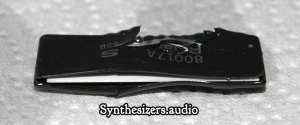
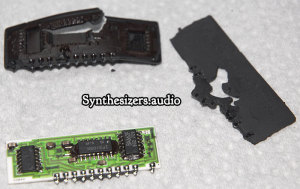
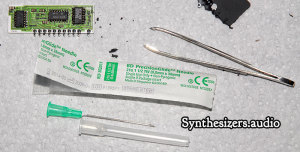
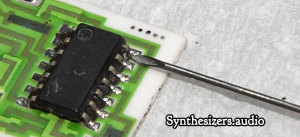
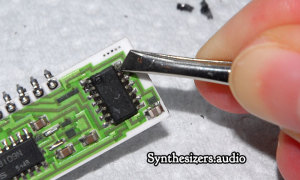
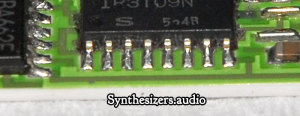
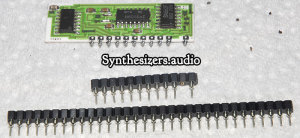
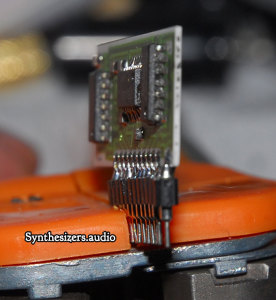
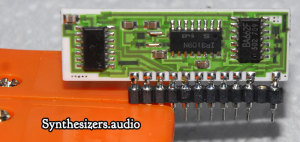

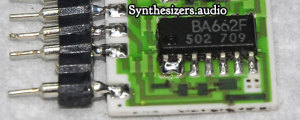
Having read your wonderful instructions for rejuvenating the Juno 106 voice chips I intend to go the socketing route you describe. I wonder if you could answer a question? Do the SIL strips you show actually act as both male and female? It appears from your photos that you plugged the male end into the female end, and also soldered the male pins to the PCB and soldered the pins of the voice chips into the female parts. If so this a beautifully simple and easy way of doing things, but I wonder if that is how the SIL strips were designed or is it something you’ve devised?
Many thanks, hoping you have time to answer this, Regards, Dennis
Hi Dennis,
Thank you kindly for the compliments on my instructions.
In reply to your question, yes, indeed that is exactly what these SIL strips are. They are designed as PCB sockets to make SIL ICs removable. This makes future removal and replacement of the voice chips very easy if needed and is one of the primary reasons for using them.
Regards,
Dannii.
Loved the jar of Vegemite to soak the IC plastic in. I reckon the residue yeast residue will give that chip a subtly better ‘analogue feel’. At least the timbre will have a unique Aussie flavour…Hyuk huk…
Nice one Gerry! LOL!!

I wondered how long it would take for someone to comment on the Vegemite jar. I actually used that jar deliberately to see if anyone would notice.
Good to see a fellow REAPERite over here too.
I used nail polish remover, acetone and the chips on the board appear to be eaten too..
Yikes! There’s no doubt other things besides Acetone in the nail polish remover. I only recommend using 100 percent pure Acetone.
I hope you haven’t soaked all six of your chips in that stuff!!!
This guide is very well put together and informative. Exactly what I was looking for before tackling this job.Thanks Dannii!
Thanks for your positive feedback Chris. All the best with your Juno.